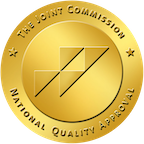Skip To Rehab Listing
With substance abuse treatment easily available, individuals struggling with alcohol and drug addiction can find assistance within their local area.
Substance Abuse Therapy Service Settings and Recovery Approaches In Taft, California
The types of rehabilitation programs in Taft include the following: outpatient substance abuse counseling, detoxification centers, long term drug abuse treatment, short term drug and alcohol rehab facilities, inpatient drug abuse treatment.
Those looking for treatment can find conveniently located facilities nearby with an array of recovery techniques designed for successful treatment. These techniques, which include both long-established and newer approaches, can consist of the following: rational emotive behavioral therapy, motivational interviewing, substance abuse counseling approach, behavior modification, contingency management/motivational incentive, 12-step facilitation approach.
Programs Addressing Special Requirements for Drug and Alcohol Treatment
Substance abuse can differ based upon circumstances, like the kind of substance causing the addiction. Many treatment programs in the Taft region offer rehabs purposed to tailor rehab to a patient's specific needs. These rehabs consist of the following: legal advocacy, residential beds for client's children, co-occurring mental and substance abuse disorders, housing services, persons with post-traumatic stress disorder, active duty military.
Patients who are not sure what their requirements are can contact these rehabs to get client resources that can guide them toward the right program.
Paying For Recovery - Payment Options & Alternatives
People struggling with substance abuse come from varied financial situations, but a variety of payment alternatives makes treatment economically accessible for anybody. Funding options include the following: private health insurance, private pay, payment assistance, medicare, medicaid, state corrections or juvenile justice funds, county or local government funds.
People looking for rehabilitation can contact a rehabilitation center to learn more about what financing opportunities are available to them.
Taft's drug and alcohol facilities, programs, and payment options provide those struggling with drug and alcohol addiction an opportunity to begin a sustainable sobriety plan.
Commonly Asked Questions about Addiction and Treatment
How do I repair relationships damaged by my drug and alcohol abuse?
"Repairing relationships damaged by substance abuse is a process that takes time, effort, and a sincere commitment to change. Here are some steps to consider:
Achieve Sobriety: The first step in repairing relationships is to focus on your recovery. Demonstrating commitment to sobriety shows your loved ones that you are serious about making a change.
Acknowledge the Damage: Be open and honest about the harm your substance abuse has caused to your relationships. Acknowledging the problem is the first step towards making amends.
Apologize Sincerely: Offer a sincere and heartfelt apology. It's essential to take responsibility for your actions and the pain they've caused, without making excuses.
Make Amends: Making amends goes beyond apologizing. It involves taking action to correct past wrongs where possible, whether that means repaying debts, resolving past disputes, or simply making a commitment to behave differently in the future.
Open Communication: Maintain open, honest, and regular communication with your loved ones. Be open to their feelings and feedback, even if it's tough to hear.
Be Patient: Healing takes time. Your loved ones may not be ready to immediately forgive or trust you again. Respect their feelings and give them the time they need to heal.
Seek Professional Help: Family or relationship therapy can provide a safe and structured environment to address issues, improve communication, and begin the process of rebuilding trust.
Maintain Consistency: One of the most crucial steps in repairing relationships is consistently demonstrating your commitment to your recovery and to positive change. This consistency helps to rebuild trust over time.
Support Their Healing: Understand that your addiction may have caused significant pain and trauma to your loved ones. Support them in their own process of healing, which may include their own therapy or participation in support groups.
Rebuild Trust: Broken trust is often the most challenging aspect of a relationship to mend. Proving through actions over time that you're committed to your sobriety and to being reliable and truthful can gradually rebuild trust.
Why do drug abusers live in denial?
"Denial is a common characteristic of many people struggling with substance abuse. It involves refusing to accept the reality of their addiction and its damaging consequences. There are several reasons why this denial occurs:
Fear: Admitting a problem means confronting the reality of addiction, including the perceived pain of withdrawal, the work of recovery, and potential stigma. Fear of these challenges can drive a person to deny their problem.
Guilt and Shame: Addiction often brings feelings of guilt and shame. Denial serves as a defense mechanism to avoid these difficult emotions.
Cognitive Impairment: Substance abuse can physically alter brain function, impairing judgment, memory, and self-awareness, making it harder for individuals to recognize or admit they have a problem.
Perception of Normality: If substance use is a daily occurrence, it can seem normal to the person doing it. They may think everyone else is doing the same or that their usage is acceptable or controlled.
Rationalization and Minimization: Individuals with substance use disorders often rationalize their behavior ("I only use on weekends") or minimize the consequences ("I still have my job, so it's not a problem").
Avoidance of Responsibility: Acknowledging the addiction implies a responsibility to change. Denial helps avoid this responsibility.
Suicide risks from drug abuse among lgbtq+ youth
Substance abuse significantly increases the risk of suicide, particularly among vulnerable populations such as LGBTQ+ (lesbian, gay, bisexual, transgender, queer, and others) youth. This heightened risk stems from a combination of factors associated with both substance abuse and the unique challenges faced by LGBTQ+ youth. Here's a closer look at these factors:
Mental Health Disorders: Substance abuse often co-occurs with mental health disorders such as depression, anxiety, and bipolar disorder, which are known risk factors for suicide. LGBTQ+ youth experience these mental health conditions at higher rates than their heterosexual and cisgender peers, partially due to the minority stress they face.
Minority Stress: Minority stress refers to the chronic stress experienced by marginalized groups, including LGBTQ+ individuals. It can include experiences such as discrimination, stigma, bullying, and family rejection, which can increase feelings of hopelessness and contribute to both substance use and suicidal ideation.
Substance Use and Suicidal Behavior: Substance use can lead to increased impulsivity, decreased inhibition, and intensified feelings of despair, making a person more likely to attempt suicide. It can also exacerbate feelings of isolation and hopelessness, further increasing the risk.
Social Isolation: Many LGBTQ+ youth feel socially isolated, either because they are not out to their peers or because they face rejection after coming out. This isolation can lead to increased substance use and a higher risk of suicide.
Family Rejection: Family rejection related to an individual's sexual orientation or gender identity can lead to increased substance use and heightened suicide risk. LGBTQ+ youth who do not receive support from their families are particularly vulnerable.
Lack of Access to Mental Health Services: Many LGBTQ+ youth struggle to access mental health and substance use treatment services, which can help manage risk factors for suicide. Barriers to access can include lack of insurance, stigma, and a shortage of providers who offer LGBTQ+-inclusive care.
Intersectionality: LGBTQ+ youth who belong to other marginalized groups (e.g., racial/ethnic minorities) often face additional layers of discrimination and stress, which can further increase their risk of substance abuse and suicide.
Efforts to prevent suicide among LGBTQ+ youth include providing access to culturally competent mental health and substance use treatment, fostering supportive environments in schools and communities, and advocating for policies that protect LGBTQ+ youth from discrimination and harassment. It's also crucial to provide support for families of LGBTQ+ youth, as family acceptance has been shown to protect against suicide risk.













